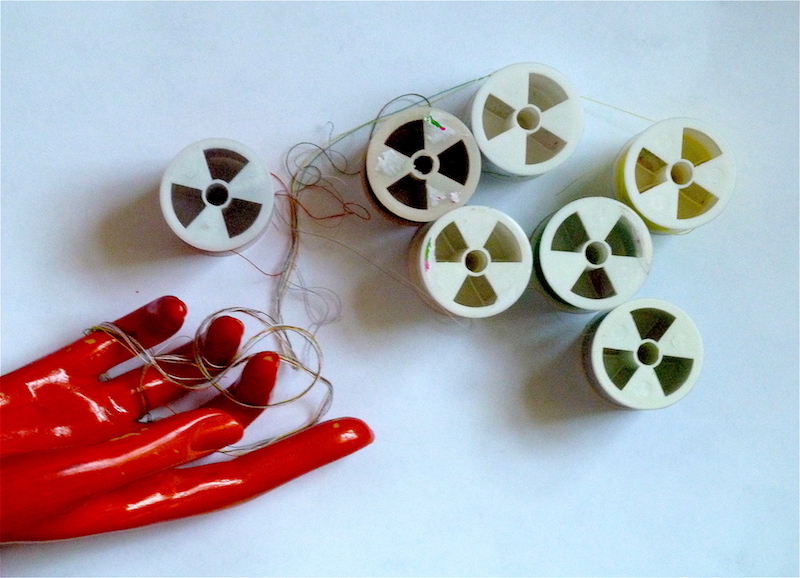こちらです/ this is the link https://www.youtube.com/watch?v=cFaMGhXO-KI

糸を巻き巻き/ Itomaki by Sanae M. Buck
昔から私は、なぜミシン糸巻と放射能マークが類似しているのか不思議に思っていた。 調べてみると、ミシン糸まきはボビンの形状に合わせて作られており、放射能のマークはそれよりものち、1941年、アメリカのカリフォルニア州バークレイ放射線研究所(現ローレンス・バークレー国立研究所)で考案され,その基本的デザインは中心から三つの葉が飛び出している。この三つの葉はそれぞれα線、β線、y線を表しており,中心となる原子核からそれぞれの放射線が飛び出している様子を簡単に表している、とのこと。
あの、愛らしい日本の子ども歌 ”糸まき” に合せてあなたは糸を巻く、ただ、あなた の手はすでに被爆し皮膚はただれ真っ赤になっている。どこまで巻き続けられるのか?
For a long time, I was wondering why sewing machine spools (bobbin) and radioactivity marks look similar.
Upon examination, the sewing machine thread was made to match the shape of the bobbin, and the mark of radioactivity was more than that. In 1941, the Berkeley Radiation Laboratory, California, USA (currently Lawrence Berkeley National Laboratory) invented in its basic design the three leaves protruding from the center. These three leaves represent α- rays, β-rays, and y-rays, respectively, and simply represent how each radiation is emitted from the central nucleus.
You wind the thread to the adorable Japanese children’s song “Itomaki”, but your hands have already been exposed and your skin is sore and red. How long will you continue to wind?